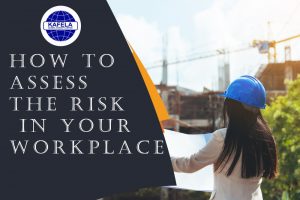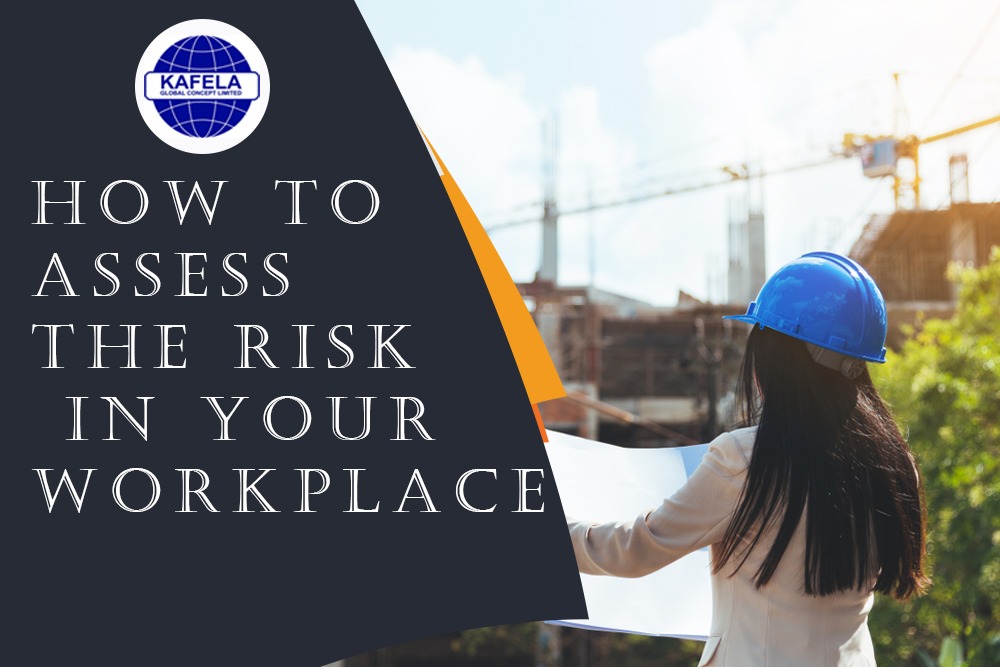ASSESSING WORKPLACE RISK
 Managing health and safety of a business requires the control of risks in the workplace. To do this you need to think about what might cause harm to people and decide whether you are taking reasonable steps to prevent that harm. This is known as risk assessment and it is something you are required by law to carry out as a business owner.
Managing health and safety of a business requires the control of risks in the workplace. To do this you need to think about what might cause harm to people and decide whether you are taking reasonable steps to prevent that harm. This is known as risk assessment and it is something you are required by law to carry out as a business owner.
A risk assessment is not about creating huge amounts of paperwork, but rather about identifying sensible measures to control the risks in your workplace.
We would identify five ways of assessing risk in a workplace. They include:
- IDENTIFYING THE HAZARD
When you work in a place every day it is easy to overlook some hazards, so here are some tips to help you identify the ones that matter:
- Check manufacturer’s instructions or data sheets for chemicals and equipment as they can be very helpful in spelling out the hazards and putting them in their true perspective.
- Look back at your accident and ill-health records – these often help to identify the less obvious hazards.
- Take account of non-routine operations (e.g. maintenance, cleaning operations or changes in production cycles)
- Remember to think about long-term hazards to health (e.g. high levels of noise or exposure to harmful substances)
There are some hazards with a recognized risk of harm, for example working at height, working with chemicals, machinery, and asbestos. Depending on the type of work you do, there may be other hazards that are relevant to your business.
- DETERMINE WHO MIGHT BE HARMED AND HOW
Think how employees (or others who may be present such as contractors or visitors) might be harmed. Ask your employees what they think the hazards are, as they may notice things that are not obvious to you and may have some good ideas on how to control the risks.
For each hazard you need to be clear about who might be harmed; it will help you identify the best way of controlling the risk. That doesn’t mean listing everyone by name, but rather identifying groups of people (e.g. people working in the storeroom or passers-by).
- EVALUATE THE RISKS AND DECIDE ON PRECAUTIONS
Having identified the hazards, you then have to decide how likely it is that harm will occur; i.e. the level of risk and what to do about it. Risk is a part of everyday life and you are not expected to eliminate all risks. What you must do is make sure you know about the main risks and the things you need to do to manage them responsibly.
Generally, you need to do everything ‘reasonably practicable’. This means balancing the level of risk against the measures needed to control the real risk in terms of money, time or trouble. However, you do not need to take action if it would be grossly disproportionate to the level of risk.
Your risk assessment should only include what you could reasonably be expected to know, you are not expected to anticipate unforeseeable risks.
Look at what you’re already doing, and the control measures you already have in place. Ask yourself:
- Can I get rid of the hazard altogether?
- If not, how can I control the risks so that harm is unlikely?
- RECORD YOUR SIGNIFICANT FINDINGS
Make a record of your significant findings – the hazards, how people might be harmed by them and what you have in place to control the risks. Any record produced should be simple and focused on controls.
If you have fewer than five employees you don’t have to write anything down. But it is useful to do this so you can review it at a later date, for example if something changes. If you have five or more employees you are required by law to write it down.
Any paperwork you produce should help you to communicate and manage the risks in your business. For most people this does not need to be a big exercise – just note the main points down about the significant risks and what you concluded.
- REVIEW YOUR ASSESSMENT AND UPDATE IF NECESSARY
Few workplaces stay the same. Sooner or later, new equipment’s are brought in, substances and procedures that could lead to new hazards. So it makes sense to review what you are doing on a regular basis, look at your risk assessment again and ask yourself:
- Have there been any significant changes?
- Are there improvements you still need to make?
- Have your workers spotted a problem?
- Have you learnt anything from accidents or near misses?
Make sure your risk assessment stays up to date.

